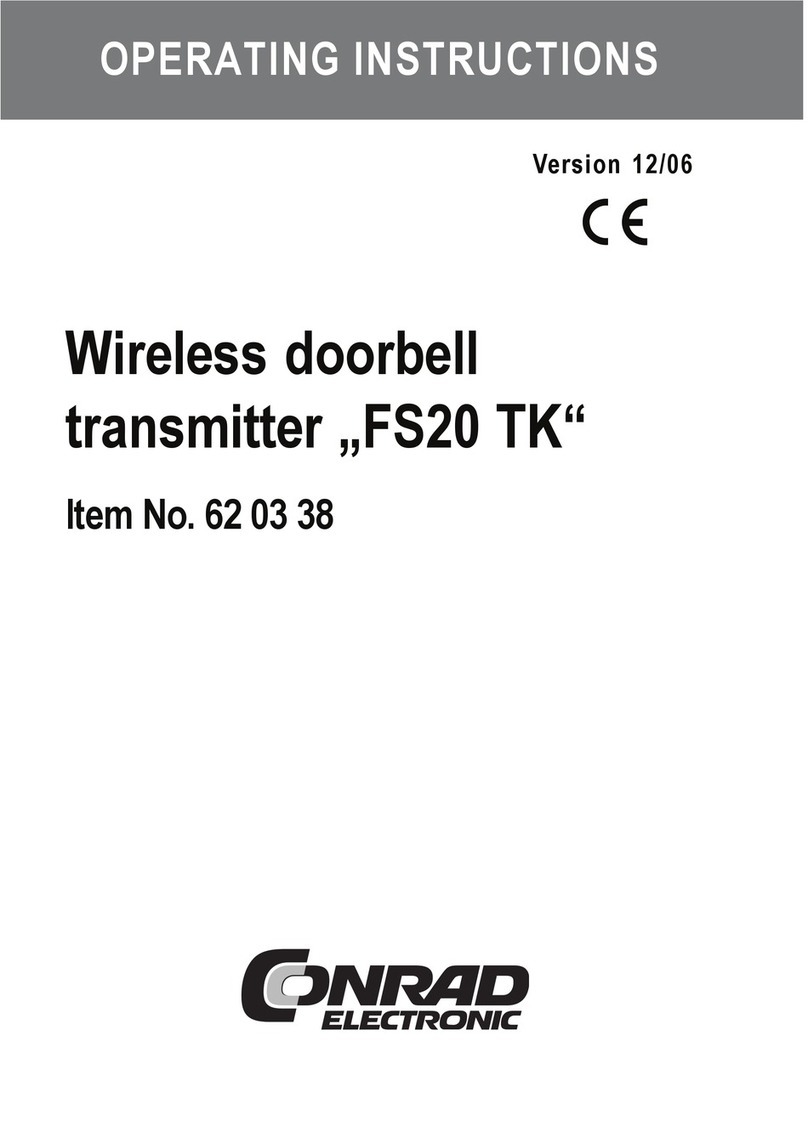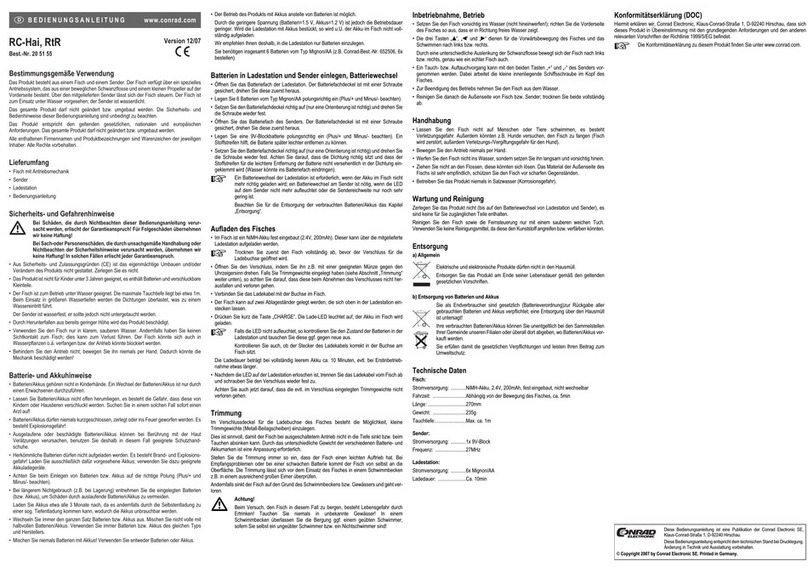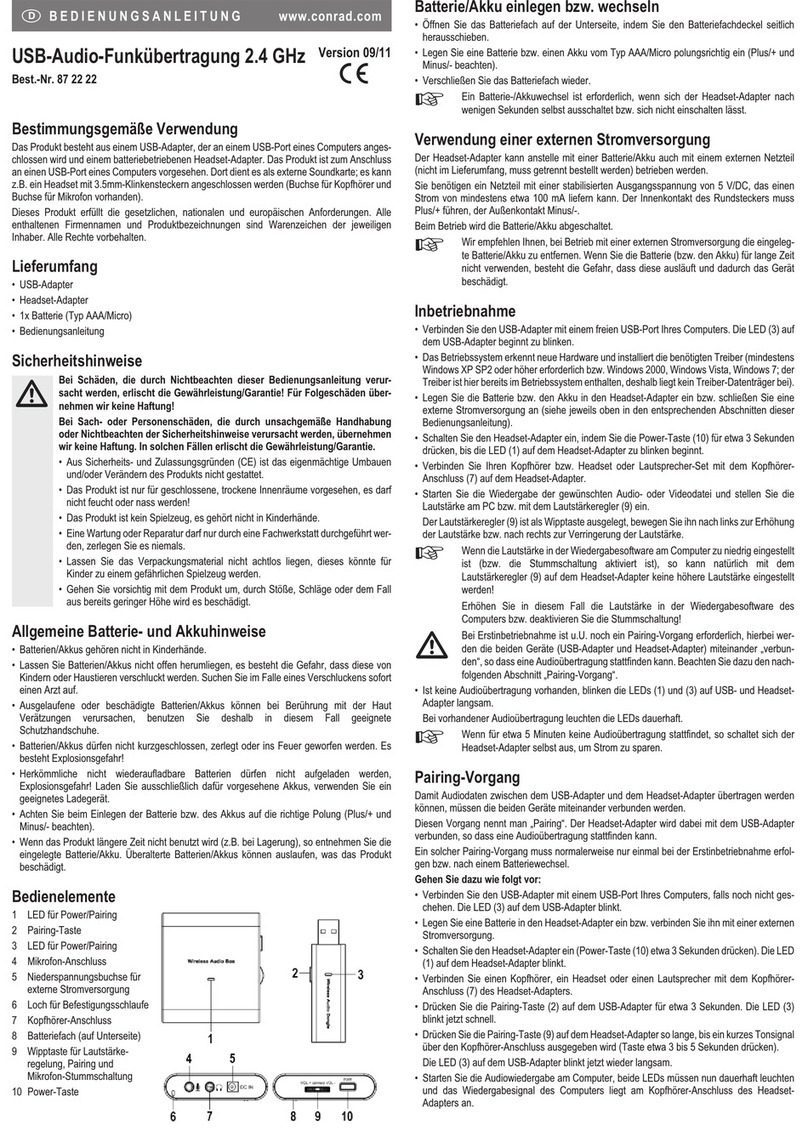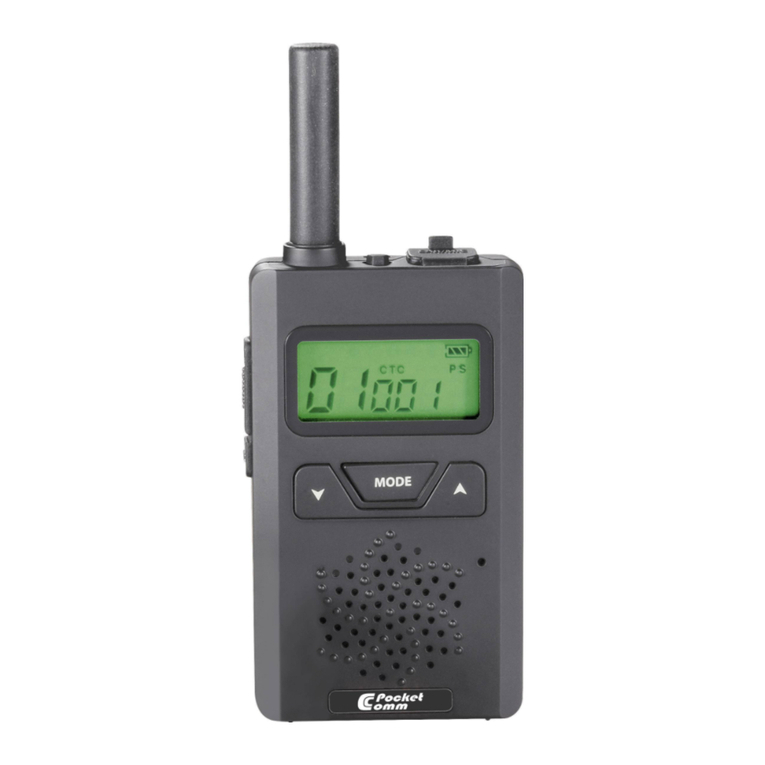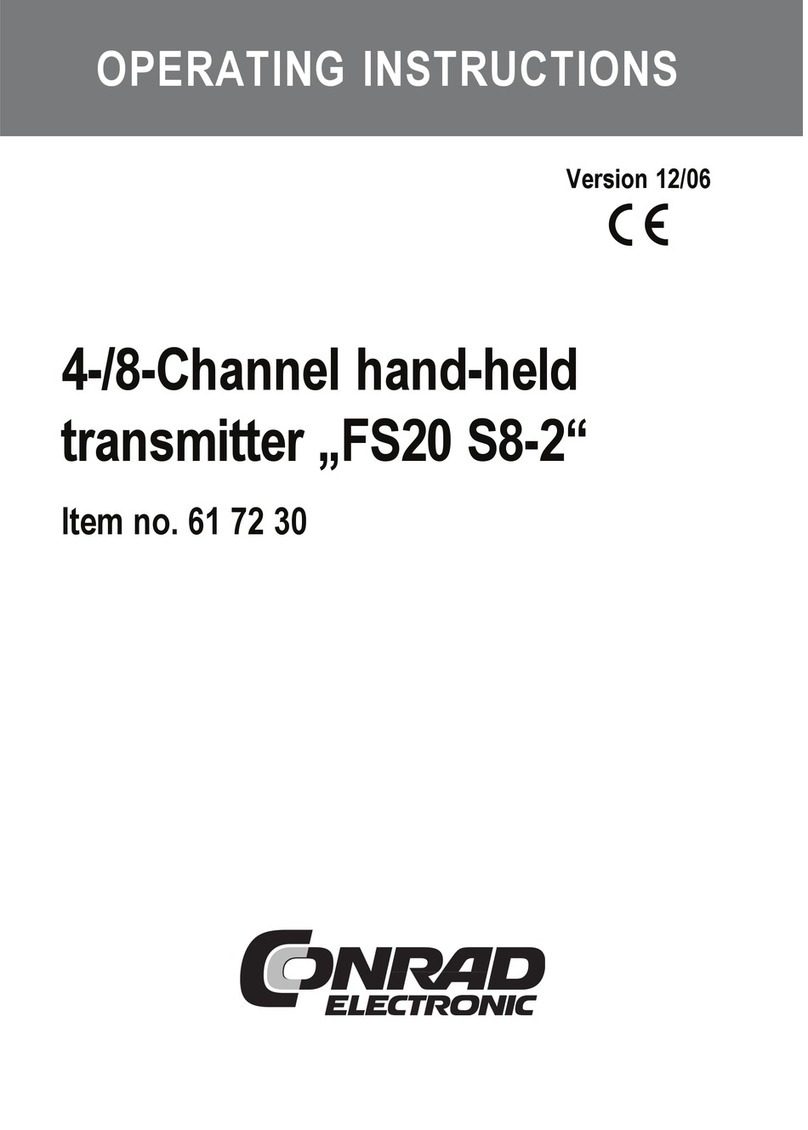3
Table of contents
Page
1. Prescribed use ............................................................................................................... 4
2. Scope of delivery ........................................................................................................... 5
3. Explanation of icons ...................................................................................................... 5
4. Safety instructions ......................................................................................................... 6
a) General information ................................................................................................ 5
b) Batteries and rechargeable batteries .................................................................... 7
5. Mounting/installation...................................................................................................... 8
a) Connections and controls ...................................................................................... 8
b) Installation ............................................................................................................... 9
6. The FS20 address system .......................................................................................... 11
7. Operation ..................................................................................................................... 16
a) Basic functions ...................................................................................................... 16
b) Using several transmitters ................................................................................... 17
c) Timer function in 4-channel operation ................................................................. 17
d) 2-channel operation .............................................................................................. 18
e) Switching between 2-channel and 4-channel operation .................................... 18
f) Timer function in 2-channel operation ................................................................. 18
8. Integrating the ‘FS20 S4UB’ into the address system, programming ....................... 19
a) Setting the house code ........................................................................................ 19
b) Setting the addresses........................................................................................... 20
1. Programming a single address in 4-channel operation ............................... 20
2. Programming a single address in 2-channel operation ............................... 21
9. Information on the range ............................................................................................. 22
10. Battery replacement .................................................................................................... 23
11. Handling ....................................................................................................................... 26
12. Maintenance ................................................................................................................ 26
13. Disposal ....................................................................................................................... 27
a) General information .............................................................................................. 27
b) Batteries and rechargeable batteries .................................................................. 27
14. Technical specifications .............................................................................................. 28
15. Declaration of conformity (DOC) ................................................................................. 28






